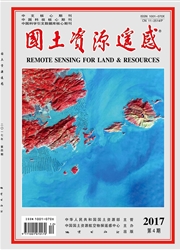

 中文摘要:
中文摘要:
以塔克拉玛干沙漠为研究区域,利用2008年AMSR-E ( advanced microwave scanning radiometer - earth ob鄄serving system)二级亮温资料和全球资料同化系统( global data assimilation system,GDAS)的地表、大气参数产品,反演研究区晴空条件下的微波地表发射率,进而根据不同的土壤类型,分析了沙漠微波地表发射率频谱年内变化规律及其与气候因子的关系。结果表明:沙漠地表发射率与土壤类型密切相关,且不同土壤类型的发射率季节变化规律显著性不同;土壤含水量、地表温度与地表发射率的年内变化规律之间存在着显著相关性,地表发射率随土壤含水量、地表温度的增高而降低;地表植被覆盖度、植被含水量和地表粗糙度也是地表发射率的影响因子,其值均取决于土壤含水量,而土壤含水量受大气总水汽量和土壤类型的共同制约;以砂土为主的沙漠地表发射率更多受到沙漠深度的影响,随着沙漠深度的增加而减小。
 英文摘要:
英文摘要:
Microwave land surface emissivity of the Taklimakan Desert was retrieved based on AMSR - E (advanced microwave scanning radiometer-earth observing system) Leval 2A measurements and land surface and atmosphere products from GDAS ( global data assimilation system ) in 2008 under clear atmospheric conditions. Then, the spectral characteristics of the retrieved emissivity were classified and analyzed with respect to the soil types, and the relationships between desert emissivity annual variability and climate factors were also analyzed. The analyses indicate that the desert microwave emissivity and its annual variability are closely related to soil types. Moreover, there is a significant correlation between soil volume water content as well as land skin temperature and inter-annual variations of emissivity, which decreases with both of the two land surface parameters. Furthermore, vegetation coverage, canopy water content and surface roughness depending on the soil moisture are also the influencing factors of emissivity, and the soil moisture is restricted by both the atmospheric total precipitable water and the underlying soil type. Additionally,the surface emissivity of the desert mostly composed of sand observably decreases with the desert depth.
 同期刊论文项目
同期刊论文项目
 同项目期刊论文
同项目期刊论文
 期刊信息
期刊信息
